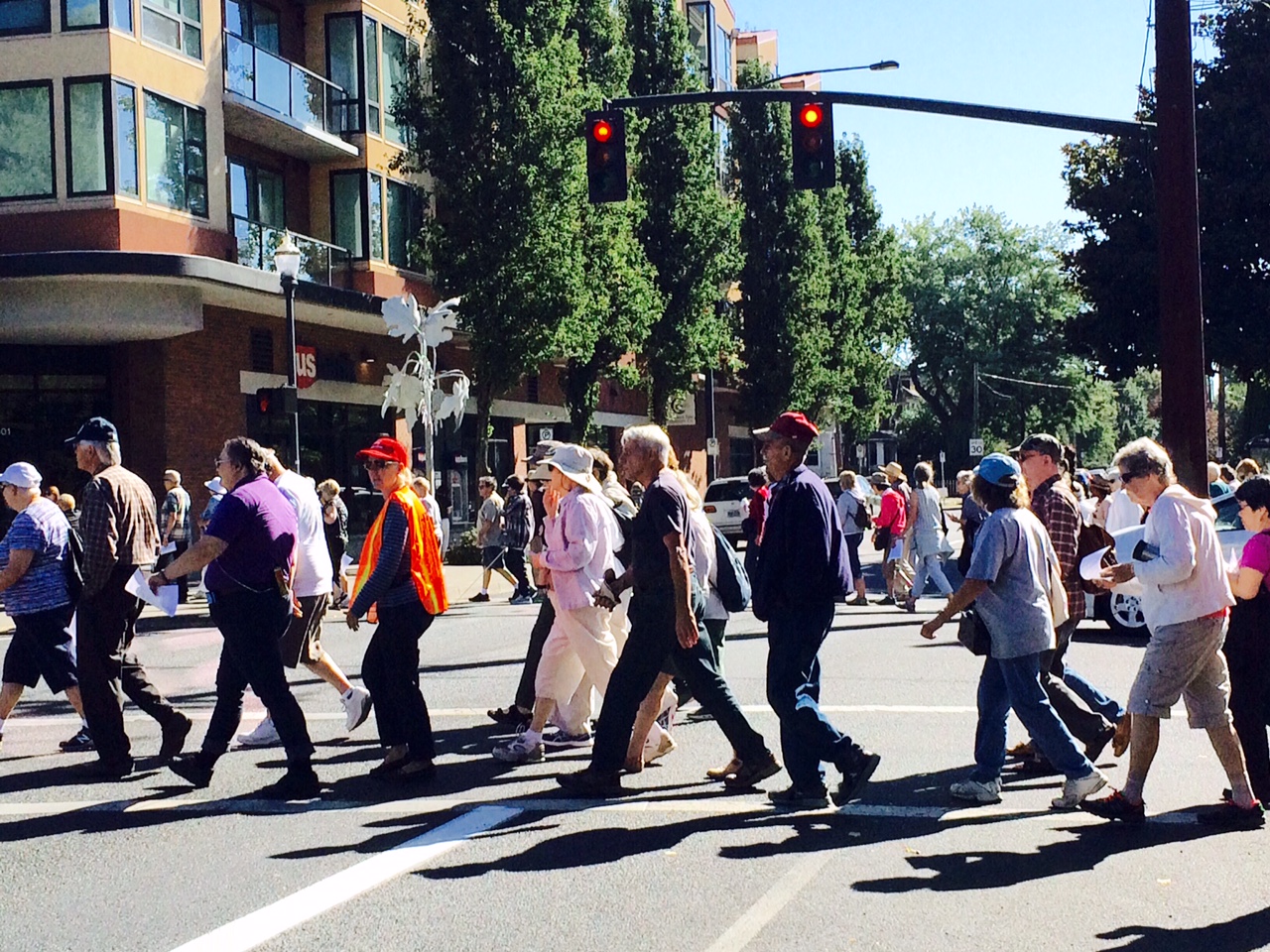AARP Hearing Center

By Elaine Friesen-Strang
“What if there was a pill you took once a day that lowered your blood pressure, prevented diabetes, improved your mood and protected against depression, increased bone density and prevented fractures, helped you remain independent as an older adult, enhanced your ability to think, and gave you more energy? Wouldn't you be asking your doctor to prescribe it for you?"
Those were the questions asked by Dr. Robert Sallis and Dr. Karen J. Coleman in the Sports Medicine Bulletin. Their good news? There is such a medication! You don't have to swallow it, take it with meals, and there isn't a co-pay. Dr. Sallis says you simply need to walk. As a Kaiser family practitioner from Fontana, California, he believes in the curative powers of walking so much, he has walking prescription pads in his exam room. He says, “If walking was a pill or surgical procedure, it would be on 60 Minutes.”
February is American Heart Month. We're encouraged to wear red to support the fight against heart disease; maybe it should be red laces on our tennis shoes. The Surgeon General, Vivek Murthy MD, says walking just 22 minutes each day, or 2 1/2 hours/week, can do wonders for our health. But in his 2015 Call to Action, he reports less than 48% of adults age 65 and older, walk as a leisurely activity. One out of two adults is living with a chronic disease and the "medical treatment of chronic diseases incurs substantial costs for individuals, families, and the nation". (Find out more in his Step It Up report.)
Locally, AARP Oregon is offering opportunities to achieve--and enjoy--some of those recommended 150 minutes/week of exercise. NeighborWalks is a program created and led by volunteers (with the talented, encouraging spirit of AARP staff) to promote walking, socialization, and community engagement. Our 2015 inaugural year featured seven walks in neighborhoods throughout Portland. This year, supported by our partners, we will offer a minimum of 10 walks, beginning in June with a kickoff at the University of Portland. Look for more information on this website and AARP's Facebook.
Until then, why not celebrate American Heart Month by keeping your car in the drive way and exploring your neighborhood by foot. Even if it's just 10 minutes, it's the start of a great treatment plan. Do it with your Valentine, or if you have an eclectic taste in music, with Dr. Murthy's Walking Playlist on Pandora. Roll or stroll your way to better health.
https://youtu.be/TW4FmrgrSAk[/youtube]
------------------------------------------
Welcome to Livable Oregon.
What makes a community livable? What do neighborhoods need to help people of all ages live active, engaged lives? Livable Oregon explores the features of age-friendly communities, the people who help create them, and what we can do to make our neighborhoods in Oregon a great place for everyone.
This blog takes its lead from the AARP Livable Communities Initiative which seeks to improve the quality of life for older adults by promoting the development of safe, accessible, and vibrant environments. AARP Livable Communities policies address issues such as land use, housing, and transportation which are vital to developing communities that facilitate aging in place.
About our lead blogger:
My name is Elaine Friesen-Strang. I understand the need for lifelong, livable communities as a mother who raised two children, a daughter who helped care for her father, a professional guardian who served adults with developmental disabilities, and a woman who is experiencing the mixed blessings of aging. Volunteering for AARP empowers me to help make my neighborhood and city a more livable, sustainable place.































































